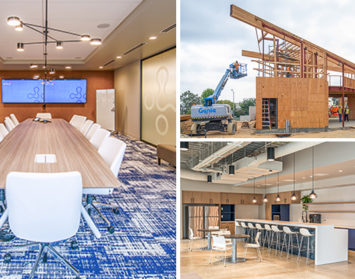Given the current state of the economy and the sharp and steady decline of new construction work in San Diego, the design and construction market has taken a big hit. This has forced most architectural firms and general contractor firms to lower their fees to historic lows. Unfortunately, this has created new unintended consequences on projects and begs the question, “How cheap is too cheap?”
In the last two years, we have seen the design and construction industry of San Diego down-scale dramatically. This is the first major contraction of the construction industry in 15 years. Some general contractors have reduced their staff by more than 30 percent, while we have seen many architecture firms downsize by over 50 percent, or even close their doors altogether. What we are left with is an ultra-competitive market across the board for corporate design and construction services in San Diego. Healthy competition is good, but we are way past that now. We now have a market where service businesses are battling hard for work just to stay alive and there is zero profit. These businesses can’t survive operating at, or below cost, so the only other variable that can be changed is the quality and cost of their services.
General contractors, for example, are starting to spread their construction managers too thin. Three years ago, a project manager for a general contractor might manage four to six projects, and today that same project manager is managing 10 to 12 projects. General contractors also are overloading their superintendents with projects, leaving those critical construction details up to the other consultants to discover, sometimes at the eleventh hour of a project. Thus, the project quality begins to suffer. The project manager is overloaded, and the superintendent is missing critical details, which in combination can lead to a project delivered late and at a reduced quality than expected … or at higher back-end costs.
Architects and engineers are no exception, but their services are typically estimated and billed hourly. But even so, in the architecture and engineering design industry, we are seeing the work product suffer. They are not allowing themselves enough hours to effectively complete each task, which in turn can lead to design problems slipping through the cracks before being submitted for permitting. In addition to lengthening the permitting schedule due to errors, changes on the plans can be modest in cost during the design phase, but extremely costly during construction.
This problem continues into the work of the other vendors supporting the construction project. The furniture vendor, the AV vendor, the data cabling vendor and the phone vendor are all competing at levels like we have never seen before. The cost of materials is similar for each vendor within a trade, and the cost of installation labor is about the same, so the only other variable is the cost of customer service. The project management and executive oversight on projects are suffering, which is leading to customer service and workmanship problems.
The solution isn’t easy, as it requires a huge amount of time to qualify and validate every vendor’s proposal. The proposals have to be combed through word-by-word in order to quantify exactly what you are getting for your money. Is the supervisor for this vendor working on your project only, or others as well? How many other projects? When do the other projects start? And when do they finish? How much time is being committed each week to properly manage the project and support the client? These are all questions that should be asked in addition to the typical qualifying that goes on with any hired vendor, contractor or consultant.
So, how cheap is too cheap? Picking the low bidder is not always the right decision. A proposal from any qualified vendor has to allow proper materials specifications, quality, time to complete the contracted work, labor to support the project from start to finish and allow the provider some reasonable profit. Otherwise, general contractors will pile on the change orders, consultants will charge additional services and other support vendors will tell you that they just didn’t plan for enough project management time.
These vendors price themselves starting off at a loss, and then spend the rest of the project trying to make a small profit. Proper due diligence during the proposal solicitation process is the key to building a project team and project that is guaranteed to succeed.
Hughes Marino’s industry leading Construction Management team has unmatched expertise in every type of commercial building project from tenant improvements to ground-up build-to-suits. With decades of experience in California and beyond, our project managers, engineers and LEED APs offer practical insights for the construction management professional.









